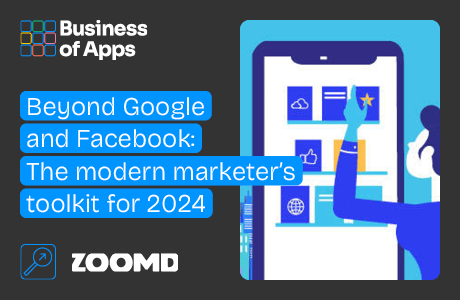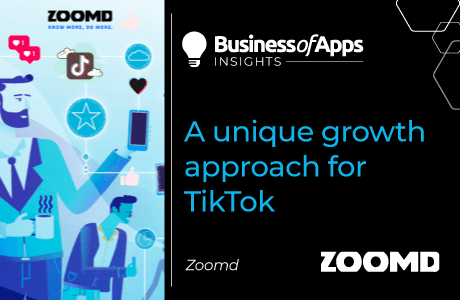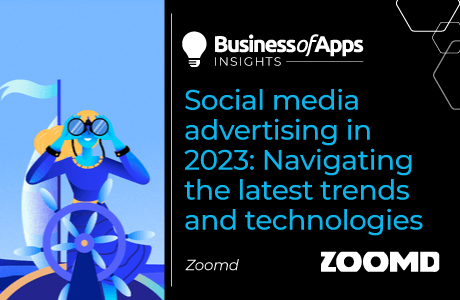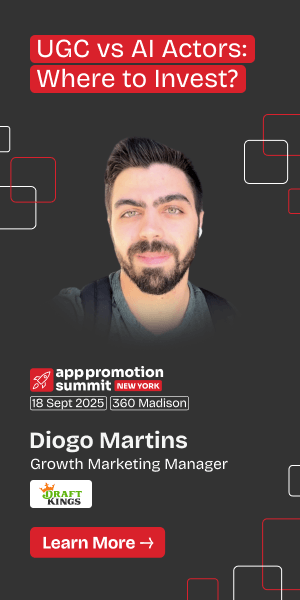The mobile advertising landscape is experiencing a significant shift. For the first time since 2017, the limits of relying solely on walled gardens — platforms like Google, Meta, TikTok, and Snap — are becoming clear. In response, programmatic advertising is gaining traction as a scalable, transparent, and sustainable solution for brands seeking incremental growth beyond the constraints of search and social giants.
Why walled gardens are losing their grip
Walled gardens built their dominance for good reasons: intuitive platforms, powerful automation, and granular targeting. But these strengths are being challenged by growing costs, privacy limitations, and lack of transparency.
Rising costs, lower ROI
In 2025, the average cost per lead on Google Ads hit $70.11*, a 15% increase from the previous year. That’s simply not viable for many advertisers, especially when performance doesn’t scale in parallel. I’ve worked with campaigns where CPLs doubled while results stayed flat. The problem? Overcrowded platforms experiencing what economists call diminishing marginal returns.
The data tells the story: while walled gardens still command 78% of global digital advertising revenue, their growth rate is slowing. Meanwhile, advertisers report that 67% of their walled garden campaigns fail to meet ROI targets, according to recent industry surveys.
Privacy-driven attribution breakdown
Apple’s iOS 14.5 rollout fundamentally broke the mobile advertising measurement model. The numbers are staggering:
- 96% of U.S. users opted out of social media tracking
- Conversion reporting delays now extend up to 72 hours
- 25% of U.S. users are completely unidentifiable across apps
- Globally, 388 million users (10% of mobile users) are untrackable
Attribution models that advertisers relied on for years became obsolete overnight. Meta alone reported that iOS changes impacted their ability to target and measure ads for over 1 billion users. Many mobile marketers watched their iOS campaigns lose 40-60% effectiveness without warning.
Transparency limitations
Walled gardens operate as black boxes, limiting access to user-level data and cross-channel attribution. In a Forrester study, 73% of advertisers feel they lack sufficient transparency from major platforms to make informed optimization decisions.
This opacity becomes particularly problematic when trying to understand incremental lift or true attribution across channels. Platform-reported metrics often inflate their own contribution while undervaluing other touchpoints in the customer journey.
Unlocking untapped reach beyond the ecosystem
While users spend 61% of their time on the open internet, 78% of digital ad budgets still flow to walled gardens. That disconnect signals a missed opportunity. Programmatic opens access to diverse global inventory, including emerging channels like CTV.
With the open web programmatic market expected to exceed $50B by 2025 (growing at 12% annually, vs. 6% for walled gardens), it’s clear this is where forward-thinking advertisers are placing their bets.
AI-powered real-time optimization
Today’s leading DSPs process over 10 million bid requests per second, making split-second decisions based on user behaviour, context, and conversion probability. This isn’t just faster than human optimization, it’s more intelligent.
Advertisers using AI-powered DSPs report 35-40% improvements in campaign performance metrics, according to a 2024 Winterberry Group study. But here’s the key difference: these optimizations serve your goals, not platform revenue goals. When Facebook optimizes your campaign, they’re optimizing for Facebook’s success. When a DSP optimizes, it’s optimizing for your KPIs.
Transparent measurement
Programmatic offers full visibility into performance, including attribution models that balance deterministic data with privacy-compliant probabilistic signals. You get to audit your own results, instead of relying on vendor-reported metrics.
The performance reality: Mobile DSP metrics that matter
When evaluating the shift to programmatic, focus on metrics that drive business outcomes, not vanity metrics that platforms prefer to highlight.
Scale and quality
Leading mobile DSPs provide access to 85-90% of global mobile inventory, but quality matters more than quantity. Look for platforms offering premium inventory with transparent quality scores and fraud detection.
Attribution accuracy
In our post-iOS 14.5 world, the best DSPs combine multiple attribution methodologies; deterministic where available, contextual signals, and privacy-compliant probabilistic matching. This hybrid approach delivers 60-80% attribution accuracy compared to 30-40% for platforms relying solely on device IDs.
Efficiency gains
Advertisers switching from pure walled garden strategies to diversified programmatic approaches typically see 20-30% improvements in cost efficiency within 90 days. The key is having clear baseline metrics before making the transition.
Cross-channel performance
Advanced DSPs enable true cross-channel measurement, showing how mobile, CTV, and display work together. This holistic view often reveals that programmatic channels drive 15-25% of walled garden conversions through upper-funnel influence.
How to win with mobile programmatic
If you’re still too dependent on walled gardens, now is the time to diversify. Yes, search and social will continue to deliver foundational scale. The opportunity is clear: layer programmatic on top to capture incremental reach and data transparency that closed ecosystems can’t match.
Here’s how successful advertisers are building programmatic muscle.
Diversify your media mix strategically
Don’t abandon existing channels overnight, that’s tactical suicide. Instead, allocate 20-30% of your budget to programmatic testing while maintaining current performance levels. Use programmatic to access incremental reach that walled gardens can’t provide.
The most successful transitions follow a 70/20/10 rule: 70% in proven channels, 20% in programmatic scaling, 10% in experimental channels.
Invest in privacy-ready infrastructure
Build robust first-party data collection and activation capabilities. Choose DSP partners with demonstrated expertise in contextual targeting and cohort-based optimization.
Leading advertisers are seeing 40-60% of their programmatic performance coming from contextual and first-party data targeting, proving that post-cookie advertising is not only viable but often more effective.
Prioritize transparent, advanced DSPs
Evaluate DSP partners based on these critical capabilities:
- Inventory quality: Access to premium publishers with transparent quality metrics
- Attribution methodology: Hybrid attribution models that work in privacy-first environments
- Optimization flexibility: Ability to optimize for your specific goals (CPI, ROAS, LTV)
- Cross-channel integration: Unified measurement across mobile, CTV, and display
- Fraud protection: Advanced fraud detection with transparent reporting
Launch systematic test-and-learn campaigns
Start with a simple A\B testing framework. Run programmatic campaigns alongside your existing UA strategies, measuring incremental lift rather than just direct performance. Track cost per install (CPI), cost per action (let’s say an order – CPA), return on ad spend (ROAS), and most importantly, incremental revenue.
Most advertisers see 20-30% improvements in cost efficiency, but the real value often comes from reaching high-value users that walled gardens miss entirely.
The path forward
I’ve been in this industry long enough to see several major shifts, and this one feels different.
The combination of cost pressures, transparency demands, and the need for incremental growth is forcing advertisers to think differently about their media mix.
We’re not witnessing the end of walled gardens. Rather, we’re seeing a shift toward a more balanced, diversified, and transparent digital media ecosystem.
Programmatic is no longer optional for mobile advertisers seeking scale, precision, and data-driven outcomes. It complements your current stack by filling in measurement gaps, unlocking new channels, and surfacing high-value users traditional platforms often miss.
The future is programmatic but one that thrives alongside search and social, not in place of them. The brands that embrace both will lead the next era of mobile growth.










